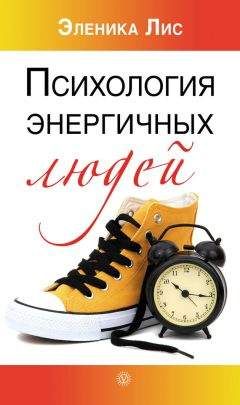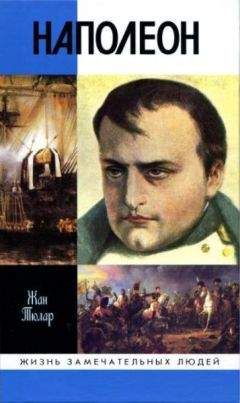Ф. Зенасни - Психология креативности
Lubart, T. L, & Lautrey, J. (1996), «Development of creativity in 9– to 10-year old children», Paper presented at the Growing Mind Congress, Geneve, Suisse.
Lubart, T. L, & Lautrey, J. (1998). «Family environment and creativity», Paper presented at the XV Biennal Meetings of the International Society for the Study of Behavioral Development, Berne, Suisse.
Lubart, T. I., Jacquet, A.-Y. & Pacteau, C. (2000), «Art des enfants, enfance de Part?», La Recherche, Hors serie № 4, 94–97.
Lubart, T. L, & Sternberg, R. J. (1995), «An investment approach to creativity: Theory and data», in S. M. Smith, T. B. Ward & R. A. Finke (eds.), The creative cognition approach (p. 271–302), Cambridge (MA), MIT Press.
Ludwig, A. M. (1992), «Culture and creativity», American Journal of Psychotherapy, 46(3), 454–469.
MacKinnon, D. W. (1962), «The nature and nurture of creative talent», American Psychologist, 17, 484–495.
Mackworth, N. H. (1965), «Originality», American Psychologist, 20(1), 51–66.
Maduro, R. (1976), Artistic creativity in a Brahmin painter community, Berkeley (CA), Center for South and Southeast Asia Studies, University of California.
Magnusson, D., & Backteman, G. (1978), «Longitudinal stability of person characteristics: Intelligence and creativity», Applied Psychological Measurement, 2(4), 481–490.
Mar'i, S. K., & Karayanni, M. (1983), «Creativity in Arab culture: Two decades of research», Journal of Creative Behavior, 16(4), 227–238.
Martin, L. L., Ward, D. W., Achee, J. W., & Wyer, R. S. (1993), «Mood as input: People have to interpret the motivational implications of their moods», Journal of Personality and Social Psychology, 64(3), 317–326.
Martinsen, O., & Kaufmann, G. (1999), «Cognitive style and creativity», in M. A. Runco & S. R. Pritsker (eds.), Encyclopaedia of Creativity (Vol. 1, p. 273–282). New York, Academic Press.
Maslow, A. (1968), Toward a Psychology of Being, New York, Van Nostrand.
Maurois, A. (1965), Promethee ou la vie de Balzac, Paris, Hachette.
Mayer, J. D., Salovey, P., & Caruso, D. (2000), «Models of emotional intelligence», in R. J. Sternberg (ed.), Handbook of intelligence (p. 396–420). New York, Cambridge University Press.
McClelland, D.C. (1962) «On the psychodynamics of creative physical scientists», in H. E. Gruber, G. Terrell & M. Wertheimer (eds.) Contemporary approaches to creative thinking (p. 141–174), New York, Atherton Press.
McCrae, R. R. (1987). «Creativity, divergent thinking, and openness to experience», Journal of Personality and Social Psychology, 52, 1258–1265.
McCrae, R. R., & Costa, P. T. (1987). «Validation of the five-factor model of personality across instruments and observers», Journal of Personality and Social Psychology, 52(1), 81–90.
McGraw, K. O. (1978), «The detrimental effects of reward on performance: A literature review and a prediction model», in M.R. Lepper & D. Greene (eds.), The Hidden Costs of Reward, Hillsdale (NJ), Lawrence Erlbaum Associates.
McLeish, J. A. B. (1976), The ulyssean adult: Creativity in the middle and later years, New York, McGraw-Hill Reyerson.
Mednick, S. A. (1962), «The associative basis of the creative process», Psychological Review, 69, 220–232.
Michael, W. B. (1999), «Guilford's view», in M.A. Runco & S.R. Pritzker (eds.), Encyclopaedia of creativity (vol. 1, p. 785–797). San Diego (CA), Academic.
Milgram, R.M., & Hong, E. (1999), «Creative out-of-school activities in intellectually gifted adolescents as predictors of their life accomplishment in young adults: A longitudinal study», Creativity Research Journal, 12 (2), 77–87.
Morris, W. N. (1992), «A functional analysis of the role of mood in affective systems», in M.S. Clark (Ed.), Emotion (p. 256–293). Newbury Park (CA), Sage.
Mouchiroud, C, & Lubart, T. I. (2001), «Children's original thinking: An empirical examination of alternative measures derived from divergent thinking tasks», Journal of Genetic Psychology, 162(4), 382–401.
Mouchiroud, C, & Lubart, T. I. (2002), «Social creativity: A cross-sectional study of 6– to 11-year-old children», International Journal of Behavioral Development, 26 (1), 60–69.
Mouchiroud, C, & Lubart, T. I. (2003), «Differences intra-individuelles dans le processus de generation d'idees originales chez l'enfant», in A. Vom Hofe, H. Charvin, J. Bernaud, D. Guedon (eds.), Psychologie differentielle: recherches et reflexions, Rennes, Presses Universitaires de Rennes.
Mumford, M. D., & Gustaf son, S. B. (1988), «Creativity syndrome: Integration, application, and innovation», Psychological Bulletin, 103(1), 27–43.
Mumford, M. D., Mobley, M. I., Uhlman, C. E., Reiter-Palmon, R., & Doares, L. M. (1991), «Process analytic models of creative capacities», Creativity Research Journal, 4(2), 91–122.
Mumford, M. D., Reiter-Palmon, R. & Redmond, M. R. (1994), «Problem construction and cognition: Applying problem representations in ill-defined domains», in M.A. Runco (ed.), Problem finding, problem solving, and creativity. Creativity research, (p. 3–39), Westport (CT), Ablex Publishing.
Myers, I. B. &McCaulley, M. H. (1985), Manual: A guide to the Myers-Briggs Type Indicator, Palo Alto, Consultive Psychologists Press.
Nasar S. (2001), Un cerveau d'exception: De la schizophrenic au Nobel, la vie singulaire de John Forbes Nash, Paris, Calmann-Levy.
Nash, J. F. (1995), «Essai autobiographique», in Les Prix Nobel 1994, Stockholm, Norsteds Tryckeri.
Nemiro, J. (1997), «Interpretive artists: A qualitative exploration of the creative process of actors», Creativity Research Journal, 10 (2–3), 229–239.
Ng, A. K. (2001), Why asians are less creative than westerners, Singapore, Prentice-Hall.
Nicholls, J. G. (1972), «Creativity in the person who will never produce anything original and useful: The concept of creativity as a normally distributed trait», American Psychologist, 27(8), 717–727.
Norton, R. W. (1975), «Measurement of ambiguity tolerance», Journal of Personality Assessment, 39(6), 607–619.
Nuttin, J. (1965), La structure de la personnalite, Paris, PUF.
Ochse, R. (1990), Before the gates of excellence: The determinants of creative genius, New York, Cambridge University Press.
Ohuche, N. M. (1987), «The ideal pupil as perceived by Nigerian (Igbo) teachers and Torrance's creative personality», Indian Journal of Applied Psychology, 24 (2), 80–86.
Okun, M. A., & Di Vesta, F. J. (1976), «Cautiousness in adulthood as a function of age and instructions», Journal of Gerontology, 31(5), 571–576.
Osborn, A. F. (1965), L’imagination constructive, Paris, Dunod, 2 ed.
Pachet, F. (2000), «Les cles d'une melodie interessante». La Recherche, Hors serie № 4, 90–93.
Papert, S. (1990), A critique of technocentrism in thinking about the school of the future, MIT Media Lab Epistemology and Learning.
Parnes, S. J., & Harding, H. F. (eds.) (1962), A source book for creative thinking, New York, Charles Scribner's Sons.
Patrick, C. (1935), «Creative thought in poets», Archives of Psychology, 178, 1–74.
Patrick, C. (1937), «Creative thought in artists», Journal of Psychology, 4, 35–73.
Pinkers, S. (1984), Language learnability and language development, Cambridge (MA), Harvard University Press.
Planck, M. (1949), Scientific autobiography and other papers (F. Gaynor, Trans.), New York, Philosophical Library.
Plucker, J. A. (1998), «Beware of simple conclusions: The case for content generality of creativity», Creativity Research Journal, 11(2), 179–182.
Plucker, J. A. (1999), «Is the proof in the pudding? Reanalyses of Torrance’s (1958 to present) longitudinal data», Creativity Research Journal, 12(2), 103–114.
Poincare, H. (1908), Science et methode, Paris, Flammarion.
Policastro. (1995), «Creative intuition, An integrative review», Creativity Research Journal, 8, 99–113.
Power, M. J., & Dalgleish, T. (1997), Cognition and Emotion: From order to disorder, Hove, Erlbaum.
Prentky, R.A. (2000–2001), «Mental illness and roots of genius», Creativity Research Journal, 13, 95–104.
Proctor, T. (1999), «Artificial intelligence», in M. A. Runco & S. R. Pritzker (eds.), Encyclopaedia of Creativity (Vol. 1, p. 127–133). New York, Academic Press.
Raidl, M-H. & Lubart, T. I. (2000–2001), «An empirical study of intuition and creativity», Imagination, Cognition and Personality, 20(3), 217–230.
Ribot, T. A. (1900), Essai sur Vimagination creatrice, Paris, Alcan. Richards, R. L. (1981), «Relationships between creativity and psychopathology: An evaluation and interpretation of the evidence», Genetic Psychology Monographs, 103, 261–324.
Ribot, T. A. (1990), «Everyday creativity, eminent creativity, and health: “Afterview” for Creativity Research Journal issues on creativity and health», Creativity Research Journal, 3(4), 300–326.
Richards, R. L, Kinney, D. K., Benet, M., & Merzel, A. P. (1988), «Assessing Everyday Creativity: Characteristics of Lifetime Creativity Scales and Validation with Three Large Samples», Journal of Personality and Social Psychology, 54, (3), 476–485.
Richards, R. L, Kinney, D., Lunde, I., Benet, M. & Merzel, A. P. (1988), «Creativity in manic depressives, cyclothymes, their normal relatives, and control subject», Journal of Abnormal Psychology, 97, 281–288.
Rieben, L. (1978), Uexamen des fonctions cognitives chez Venfant: intelligence, creativite et operativite, Neuchatel, Delachaux et Niestle.
Roe, A. (1952), The making of a scientist, New York, Dodd, Mead.
Rogers, C. R. (1954), «Toward a theory of creativity», ETC: A Review of General Semantics, 11, 249–260.
Romer, P.M. (1994), «The origins of endogenous growth», Journal of Economic Perspectives, 8, 3–22.
Rosenblatt, E., & Winner, E. (1988), «The art of children’s drawing», Journal of Aesthetic Education, 22(1), 3–15.
Rosenman (1988), «Serendipity and scientific discovery», Journal of Creative Behavior, 22, 132–138.
Rossman, B. B., & Horn, J. L. (1972), «Cognitive, motivational and temperamental indicants of creativity and intelligence», Journal of Educational Measurement, 9(4), 265–286.
Rossman, J. (1931), The psychology of the inventor, Washington DC, Inventors Publishing Company.
Rothenberg, A. (1979), «Einstein’s creative thinking and the general theory of relativity: A documented report», American Journal of Psychiatry, 136(1), 38–43.
Rothenberg, A. (1996), «The Janusian process in scientific creativity», Creativity Research Journal, 9(2–3), 207–231.
Rothenberg, A., & Sobel, R. S. (1980), «Creation of literary metaphors as stimulated by superimposed versus separated visual images», Journal of Mental Imagery, 4(1), 77–91.
Rouquette, M.-L., (1973), La creativite, Paris, PUF, coll. «Que sais-je?».
Runco, M. A. (1991), Divergent thinking, Westport (CT), Ablex Publishing.
Runco, M. A. (1998), «Tension, adaptability, and creativity», in S. W. Russ (ed.), Affect, creative experience and psychological adjustment (p. 165–194). Philadelphia, Taylor & Francis.
Runco, M. A., & Albert, R. S. (1985), «The reliability and validity of ideational originality in the divergent thinking of academically gifted and nongifted children», Educational and Psychological Measurement, 45, 483–501.
Runco, M. A., & Charles, R. (1997), «Developmental trends in creative potential and creative performance», in M. A. Runco (ed.), Creativity Research Handbook (Vol. 1, p. 115–152), Cresskill (NJ), Hampton Press.
Runco, M. A., & Dow, G. (1999), «Problem finding», in M. A. Runco & S. R. Pritsker (eds.), Encyclopaedia of Creativity (Vol. 2, p. 433–435). New York, Academic Press.
Russ, S. W. (1993), Affect and creativity: The role of affect and play in the creative process, Hillsdale (NJ), Erlbaum.
Russ, S. W. (1999), «Play, affect, and creativity: Theory and research», in S. W.
Russ (ed.), Affect, creative experience and psychological adjustment (p. 57–75), Philadelphia, Taylor & Francis.
Rutherford, F.J., Holton, G., & Watson, F.G. (1975), Project Physics, Unit 2, New York, Holt, Rinehart & Winston.
Sapp, D. D. (1992), «The point of creative frustration and the creative process: A new look at an old model», Journal of Creative Behavior, 26(1), 21–28.
Sawyer, K. (1992), «Improvisational creativity: An analysis of jazz performance», Creativity Research Journal, 5(3), 253–263.
Schaefer, C. E. (1991), Creative Attitude Survey, Jacksonville (IL), Psychology and Educators, Inc.
Schank, R. C. (1988), «Creativity as a mechanical process», in R. J. Sternberg (ed.), The nature of creativity (p. 220–238). New York, Cambridge University Press.
Schuldberg, D. (2000–2001), «Six subclinical “spectrum” traits in “normal creativity”», Creativity Research Journal,13(1), 5–16.
Schwarz, N. (1990), «Feelings as information: Informational and motivational functions of affective states», in E. T. Higgins & R. M. Sorrentino (eds.), Handbook of motivation and cognition: Foundations of social behavior, Vol. 2 (p. 527–561). New York, Guilford Press.
Schwarz, N., & Clore, G. L. (1983), «Mood, misattribution, and judgments of well-being: Informative and directive functions of affective states», Journal of Personality and Social Psychology, 45(3), 513–523.
Shepard, R. N. (1978), «The mental image», American Psychologist, 33(2), 125–137.
Silver, H. R. (1981), «Calculating risks: The socioeconomic foundations of aesthetic innovation in an Ashanti carving community», Ethnology, 20, 101–114.
Simonton, D. K. (1984), Genius, creativity, and leadership, Cambridge (MA), Harvard University Press.
Simonton, D. K. (1989), «The swan-song phenomenon: Last-works effects for 172 classical composers», Psychology and Aging, 4(1), 42–47.
Simonton, D. K. (1997), «Creative productivity: A predictive and explanatory model of career trajectories and landmarks», Psychological Review, 104, 66–89.
Simonton, D. K. (1999), Origins of genius: Darwinian perspectives on creativity, London, Oxford University Press.
Smith, S. M. & Dodds, R. A. (1999), «Incubation», in M. A. Runco & S. R. Priztker (eds.), Encyclopaedia of creativity (Vol. 2, p. 39–43), San Diego (CA), Academic.
Smith, S. M., Ward, T. B., & Finke, R. A. (eds.). (1995), The Creative Cognition Approach, Cambridge (MA), MIT Press.
Spearman, C. (1931), Creative Mind, Oxford, Appleton-Century.
Stecker, R. (2000), «Expressiveness and expression in music and poetry», Journal of Aesthetics and Art Criticism, 59(1), 85–96.
Stein, B. S. (1989), «Memory and creativity», in J. A. Glover & R. R. Ronning (eds.), Handbook of creativity (p. 163–176), New York, Plenum Press.
Stein, M. I. (1974), Stimulating creativity: Individual procedures, New York, Academic Press.
Sternberg, R. J., & Dav idson, J.E. (eds.) (1995), The nature of insight, Cambridge (Mass), MIT Press.
Sternberg, R. J., Kaufman, J. C, & Pretz, J. E. (2002), The creativity conundrum: A Propulsion model of kinds of creative contribution, New York, Psychology Press.
Sternberg, R. J., & Lubart, T. I. (1991), «An investment theory of creativity and its development», Human Development, 34, 1–31.




